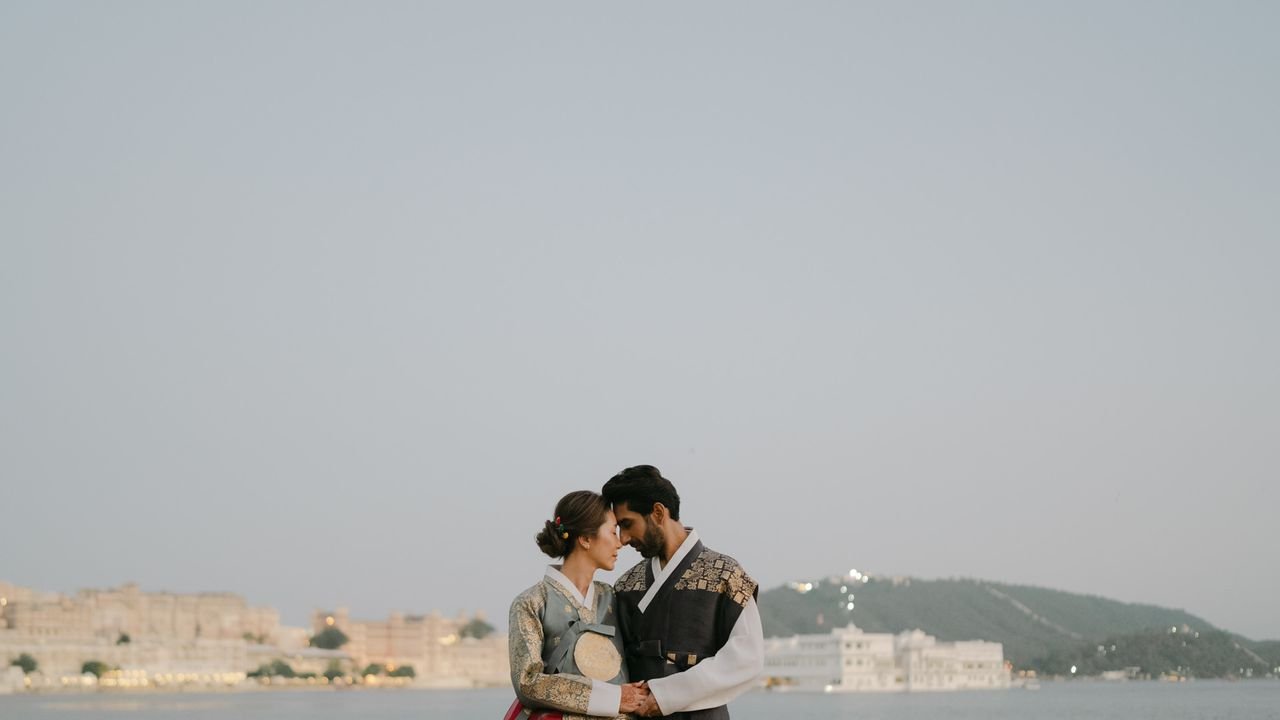NAMAN VERMA
“My years of studying Hindu philosophy, yoga, and meditation meant I could meet Rahul’s side halfway,” adds the bride, a Hoffman Process teacher, an integral coach, and a writer.
The festivities
NAMAN VERMA
Celebrations began with musical pheras by spiritual performer Ankit Batra, who sang each vow and translated it into English as well. The bride brought a Korean touch to Udaipur, too, with the pyebaek, a Korean wedding ritual during which the bride is formally welcomed into the groom’s family. “My girlfriends flew in from Seoul with special brass bowls, jujubes, and rice wine for the set-up,” says the bride. “Traditionally, the pyebaek involves just the groom’s relatives. But we invited my parents to join the altar. Everyone bowing and sharing tea together was the perfect bridge between our cultures.” Post-wedding, the couple stayed back with friends to explore Udaipur, before heading to Amanbagh, Jaipur, for a longer holiday.
The wardrobe
NAMAN VERMA
NAMAN VERMA
Aerin worked with stylist Nisha Kundnani of Bridelan to decode the nuances of an Indian wedding, choosing three lehengas: a sage green Sabyasachi for the mehendi, a sparkly Falguni Shane Peacock for the sangeet, and an ivory Tarun Tahiliani for the pheras. The groom wore John Varvatos and Sabyasachi. For the pyebaek, the pair dressed in Korean hanboks. Aerin says, “Mine was a red silk skirt with a green top. He wore royal-blue robes with gold edges—the colours of a Korean king and queen.”


.jpg)


